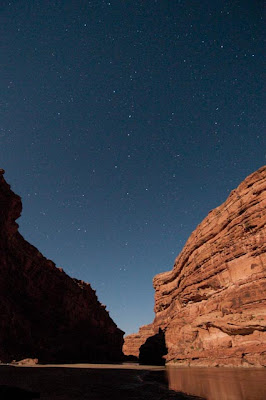 All day long it did not look very hopeful for a view of the lunar eclipse on the solstice, an extremely rare celestial event. Thick flannel gray clouds blanketed Flagstaff's skies and an astronomer friend said that the forecast wasn't good. But we stayed up late (not easy for us old folks) and kept checking outside. Amazingly, as the shadow of the Earth slowly began to slide across the face of the moon, the clouds thinned enough for a most spectacular sight.
All day long it did not look very hopeful for a view of the lunar eclipse on the solstice, an extremely rare celestial event. Thick flannel gray clouds blanketed Flagstaff's skies and an astronomer friend said that the forecast wasn't good. But we stayed up late (not easy for us old folks) and kept checking outside. Amazingly, as the shadow of the Earth slowly began to slide across the face of the moon, the clouds thinned enough for a most spectacular sight. As you may remember from an earlier post, photographing the moon usually takes a normal daylight exposure since it IS the sun illuminating the lunar surface. However during an eclipse, the range of brightness is so extreme between the shadow and unshadowed areas that it is difficult to get a good exposure without resorting to High Dynamic Range techniques ( something to be discussed in a future blog - it's where several images are taken at different exposures and then combined using software). Additionally, once the shadow covers the moon, the light is pretty dim, requiring a much longer exposure. To keep it simple while I was outside in my pjs, I waited until totality was almost complete and then bracketed my shots. The best turned out to be .6 seconds @ f2.8; ISO 800.
Happy Holidays and Good Shooting (with a camera)! :-)


















































